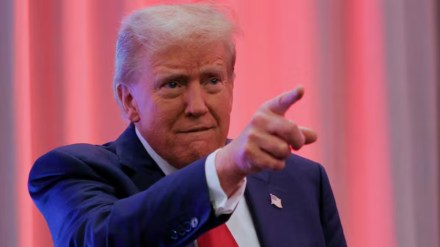While India is negotiating the contours of the proposed bilateral trade agreement (BTA) with the US delegation, it is still not clear how successful New Delhi will be in dodging the US tariff impact. Another point of contention here is the criteria basis which US President Donald Trump will levy the tariffs on its trade partners. While a majority of countries are currently talking about reciprocal tariff after the announcement made by Trump, one thing to be noted is that these reciprocal tariffs will be levied not just based on tariffs imposed by partner countries, but also the VAT, exchange rate deviation from market value and non-tariff barriers.
It is worth noting here that India’s weighted average effective tariff rate on US imports is much higher than US tariffs on India, India has high non-tariff barriers and it imposes a goods and services tax, meeting many of the criteria on which the US is likely to determine the reciprocal tariff on each country.
The non-tariff barriers, unlike tariffs, are harder to quantify and they include import policies, sanitary and phytosanitary measures, technical barriers to trade, export subsidies, a lack of intellectual property protection, etc. Citing WTO’s Integrated Trade Intelligence Portal, Nomura has said that China and India have the highest non-tariff barriers in Asia, with both countries using antidumping measures as a retaliatory tool.
The US President had, earlier in February, signed a memorandum on a “Fair and Reciprocal Plan”, which calls for imposing a reciprocal tax on partner countries that follow unfair trading practices. This implies that the tariffs will also consider factors including value added taxes, deviations of exchange rates from market value, unfair limitations on market access and non-tariff barriers.
A US delegation led by its assistant trade representative for South and Central Asia Brendan Lynch arrived in India on Tuesday to take part in negotiations on the contours of the proposed BTA. The talks formally began on Wednesday and will continue till Saturday. Commerce and Industry Minister Piyush Goyal, while speaking at the Times Now Summit, had said that the ongoing trade agreement negotiations with the US are moving forward positively. Goyal had emphasised that the potential bilateral trade agreement would benefit both nations while safeguarding India’s interests. Nomura had, in a report, said that even as India is placed in the direct line of fire of US President Donald Trump’s reciprocal tariffs, the Bilateral Trade Agreement (BTA) negotiations is an encouraging sign.
How will Trump impose tariffs on economies?
The Trump administration’s proposed reciprocal tariffs mean different things to different people. Nomura said, “The most narrow, and least significant, interpretation assumes a simple matching of other countries’ tariffs currently imposed on the US. If India’s tariff on imports from the US is 9.5 per cent, and US’s tariff on imports from India is 3 per cent, then the reciprocal tariff would be 6.5 per cent.”
According to this interpretation, India, Thailand and Brazil are among the five most exposed.
Now broadening the scope of criteria for US reciprocal tariffs, Nomura said it could depend on many key factors, including but not limited to: the size of US trade deficits with other countries, de minimis exports, VAT rates, digital taxes, circumvention of US tariffs through third countries, currency manipulation, state subsidies and various other non-tariff trade barriers. “The investigations by the United States Trade Representative, the Secretary of Commerce and Treasury Department that are due to be completed by 1 April cover many other areas, including but not limited to: the size of US trade deficits with other countries, de minimis exports, VAT rates, digital taxes, circumvention of US tariffs through third countries, currency manipulation, state subsidies and various other non-tariff trade barriers,” the Nomura report stated while maintaining that tariffs could even be imposed for geopolitical means.
While these cannot include all the possibilities and there could be exclusions and might not say much on the magnitude of the tariffs, Nomura concluded, “All this is another way to say there is massive uncertainty on the targets, size and scope of the tariffs expected on 2 April.”
